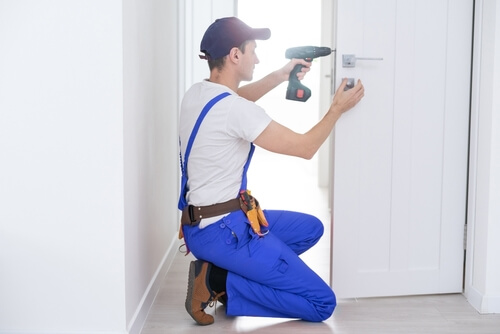
Understanding the types of fixings available and their specific applications can make all the difference in achieving a reliable, long-lasting result for beginners and seasoned builders alike.
This article covers everything you need to know about frame fixings, from choosing the right type for your project to installation tips.
Are you ready to tackle your next project with confidence? Read on for more.
The Different Types of Frame Fixings
Depending on the type of material you’re dealing with, different frame fixings will be required to ensure an efficient application.
The most common frame fixings include:
- Plastic frame fixings: Made from durable plastic, these are perfect for lighter loads, such as securing façades, roof substructures, and heavy wall cabinets.
- Metal frame fixings: These have higher load capacities and are best for heavy-duty applications, including windows, doors, and steel supports.
- Hammer fixings: These are popular for attaching wooden battens or frames to masonry.
- Universal frame fixings: These versatile options adapt to multiple materials. They are often used for lightweight structures, where the anchoring substrate may vary, providing flexibility in installation.
How to Choose the Right Frame Fixing
Selecting the right frame fixing depends on several key factors, which ensure both safety and effectiveness for your project:
- Material type: Certain fasteners are needed to ensure a firm grip on various materials, including concrete, brick, and wood. Metal fasteners are more effective in concrete or masonry, but plastic fasteners are perfect for lighter applications in softer materials.
- Load requirements: Consider the weight and type of the item being fixed. Stronger fasteners, like metal anchors, are required for heavier objects, such as doors or massive frames, to avoid gradual loosening.
- Environmental conditions: To avoid rust and guarantee endurance, corrosion-resistant fasteners are crucial for outdoor projects exposed to moisture, wind, or fluctuating temperatures.
- Anchorage thickness and depth: It’s important to consider both the thickness of the materials being fastened and the depth of the fastening. While some fasteners are intended for shallow anchors, others can pierce deeply to offer additional strength.
- Standards for compliance and safety: Seek out fasteners that have the necessary certifications, such as European Technical Approvals (ETAs), which ensure performance, quality, and safety.
- Ease of installation: For beginners or DIY projects, choosing fixings that are easier to install, such as hammer fixings, can save time and effort.
Installation Tips for Beginners
Frame fixings are fairly easy to install, perfect for DIY projects. Complete the following for a quick and simple installation:
- Choose the right tools: Make sure your drill bit size matches the material and fixing you are using. A hammer drill works great for concrete or masonry projects.
- Mark and drill the holes: Measure carefully and mark where the fixings will go. Drill straight and to the required depth. Clear the holes of dust to guarantee a tight fit.
- Insert the fixing: Gently tap the fixing into the hole until it’s flush with the surface. Ensure it is snug but not overly tight to prevent damage.
- Fasten the screw or anchor: Insert the screw or anchor into the fastening using the corresponding screwdriver or wrench. Avoid over-tightening, which could strip the threads or harm the fastening, and only tighten until it is secure.
- Check for stability: After installation, make sure the mounting is stable and the fastener is securely fastened. Check for any movement to ensure it’s properly anchored.
FAQ’s
What tools do I need for installing frame fixings?
A drill (hammer drill for masonry), appropriate drill bits, screwdrivers, a wrench, and safety gear are essential.
What are common mistakes to avoid when installing frame fixings?
Avoid common mistakes, such as drilling at the wrong depth, not cleaning the hole, overtightening screws, and using the wrong type of fixing for the material.
Where can I buy reliable frame fixings?
ASP offers a wide selection of frame fixings and construction tools, so you can find products that suit your needs.